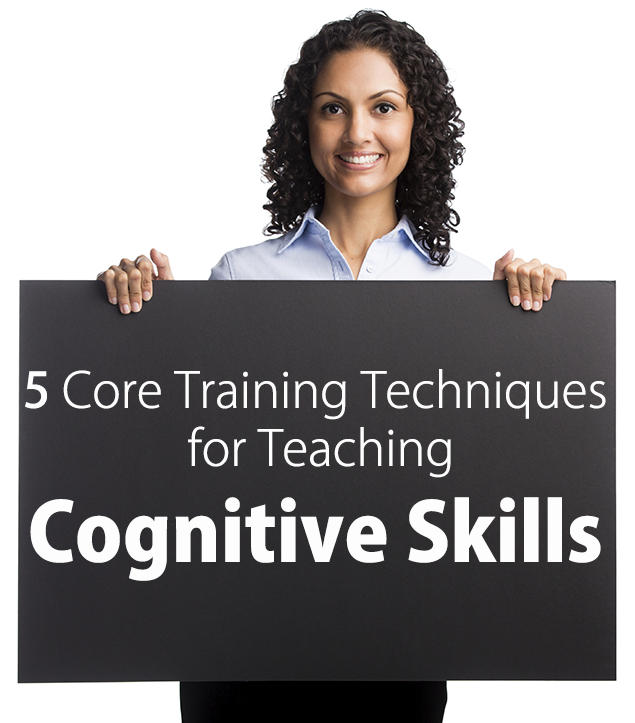How can Teachers Teach Cognitive Skills?
Posted by Network Support · Leave a Comment
Help improve over all learning in your classroom by addressing learning skills on the most basic level. This lesson provides training techniques in order to create better cognitive learning for every student.
Due to exciting new brain research, we now know that some cognitive difficulties can be improved. With the right training a student can be taught to learn and improve their ability for learning. The most deliberate and useful of these practices is carefully structured training. Effective cognitive skill training requires focused attention and immediate feedback in a one-to-one setting.
5 Core Training Techniques to Improve Cognitive Skills:
1. Strong Foundation
A healthy brain naturally seeks to operate as efficiently as possible. If we expand our brain capacity and connections, our brain takes advantage of the new resources every time it faces a processing task. Since academic performance is dependent on cognitive skill function, increasing the brain’s capabilities leads to improved academic performances.
2. Repetition
With repetition, a cognitive skill can eventually become a stored routine. To make this happen, the first step is to bring the skill to a conscious level where the student is deliberately thinking about improving this skill. In other words, the student knows in what skill they are lacking and focus on doing activities that will help them build this skill. As a skill is practiced or rehearsed over days and weeks, the activity becomes easier and easier while naturally forcing the skill to a subconscious level where it becomes permanently stored for recall and habitual (or automatic) use at anytime.
3. New Activities
When a person learns a new task or acquires new knowledge, this new memory is assigned to a particular area of their brain. Within this space, additional brain cells (neurons) are recruited to help with processing this new information. The more a person practices or rehearses a new activity, the greater the number of neurons that get involved and the active space in the brain devoted to this new activity. The brain then expands to accommodate the assignment. In other words, by participating in new activities, students can stretch their brains.
4. Progressive Drills
A drill is the repetition of a single task. Research shows that repetitive drills build strong pathways and expand the surrounding area of the brain. Practicing a skill reinforces the mental connections in the brain required to execute it, as the brain stays engaged as long as required to handle each drilled task. Repetition communicates the importance assigned to a task and consequently, the brain recruits additional cells to record it. The brain’s natural capacities adapt quickly and permanently to establish each new related skill. The cognitive skills training should be delivered over multiple days each week and over at least a three-month period.
5. Feedback
The brain attaches value and importance to immediate associations. Connections are stronger between information that is closely and repeatedly associated. Immediate feedback provides these types of close proximity associations. Good brain training needs to facilitate immediate feedback of two types – positive feedback and corrective feedback. One-on-one training makes this possible.
With these techniques learning is made possible on many levels. The classroom is a place where students not only learn new information, but learn how to be better learners as well.
Like this article for teachers?
Browse the Professional Learning Board COURSE CATALOG to find related online courses for teachers in your state. Professional Learning Board is a leading provider of online professional development classes that teachers use to renew a teaching license or renew a teaching certificate.





